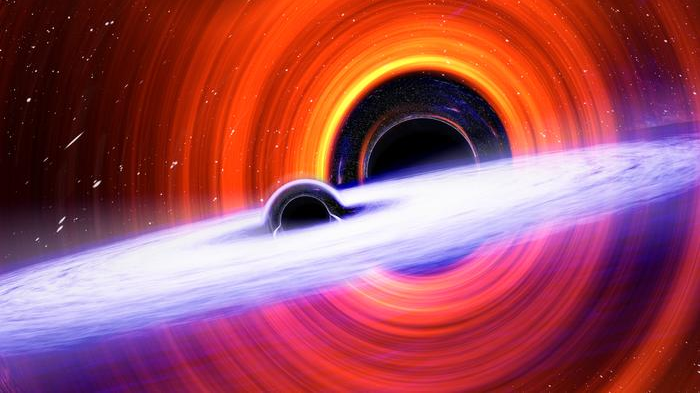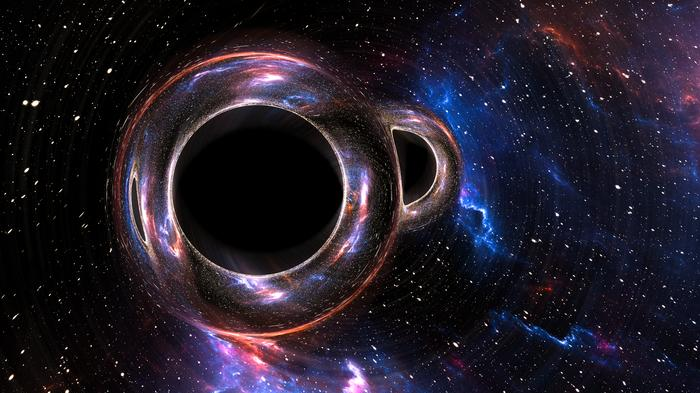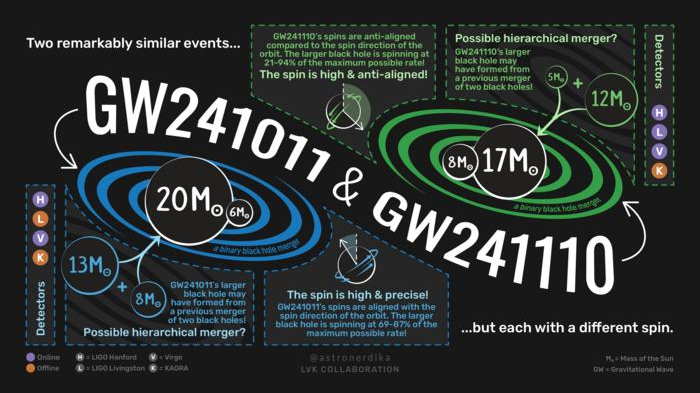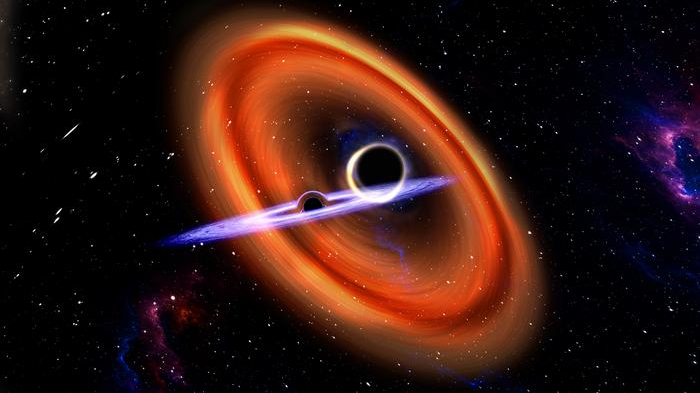Scientists hear 2 newborn black holes 'crying' through ripples in spacetime — and one had a birth unlike anything seen before
"GW241011 and GW241110 are among the most novel events among the several hundred that the LIGO-Virgo-KAGRA network has observed."

Scientists have "heard" the symphony of two newborn black holes — each created when its respective parent black holes crashed together and merged. One of those collision events, in fact, was the first of its kind.
The detection of the baby black holes and information about the four parent black holes that forged them came courtesy of ripples in spacetime, or gravitational waves, caused by the violent cosmic events that gave birth to them. Those waves were registered by the LIGO (Laser Interferometer Gravitational-Wave Observatory), Virgo, and KAGRA (Kamioka Gravitational Wave Detector) gravitational wave detectors.
The LIGO-Virgo-KAGRA collaboration detected the first merger, designated GW241011, on Oct. 11, 2024. It was the result of a black hole with around 17 times the mass of the sun crashing into its partner black hole with a mass around seven times that of our star. The event was calculated to have happened around 700 million light-years from Earth. Decoding the resultant gravitational wave signal revealed a couple of things: The masses of the black holes involved as well as the fact that the larger of the pair is one of the most rapidly spinning black holes ever observed.
Less than one month after this groundbreaking detection, on Nov. 11, 2024, the gravitational wave instruments "heard" another newborn black hole screaming after the violent collision of its progenitors. This signal, GW241110, originated from a collision between black holes with 16 and eight times the mass of the sun and occurred about 2.4 billion light-years away. This signal revealed that one of the black holes involved was spinning in the opposite direction of its orbit around the other black hole, the first time such a characteristic has been seen for merging binary black holes.

"Each new detection provides important insights about the universe, reminding us that each observed merger is both an astrophysical discovery but also an invaluable laboratory for probing the fundamental laws of physics," Carl-Johan Haster, an assistant professor of astrophysics at the University of Nevada, Las Vegas (UNLV), said in a statement. "Binaries like these had been predicted given earlier observations, but this is the first direct evidence for their existence."
Both events indicate the existence of so-called second-generation black holes.
"GW241011 and GW241110 are among the most novel events among the several hundred that the LIGO-Virgo-KAGRA network has observed," Stephen Fairhurst, LIGO Collaboration spokesperson and a Cardiff University professor, said in the statement. "With both events having one black hole that is both significantly more massive than the other and rapidly spinning, they provide tantalizing evidence that these black holes were formed from previous black hole mergers."
Breaking space news, the latest updates on rocket launches, skywatching events and more!
Black holes: the second generation
The idea that the detected black holes are second-generation comes from the difference in size between the larger black holes and their smaller companions in the two mergers. The more diminutive black holes appear to have been almost half the mass of their companions. The orbit-opposing orientation of the larger black hole's spin in the merger that produced the signal GW241110 is also evidence of a prior merger having produced that dominant black hole.
The process of black hole growth by collision after collision is known as "hierarchical merger." This is believed to occur in densely populated regions like star clusters, where black holes are more likely to meet and coalesce over and over again, resulting in subsequently larger black holes.

GW241011 offers scientists the opportunity to probe the limits of Albert Einstein's 1915 theory of gravity, general relativity, from which the concept black holes and gravitational waves both emerged.
For instance, the rapid rotation of the black hole involved in this particular merger deforms the object, and that leaves a unique impression in the gravitational waves it emits. This means that this event can be compared to general relativity and the predictions physicist Roy Kerr made using Einstein's theory concerning rotating black holes. The black holes of GW241011 conformed to Kerr's solution to general relativity, the study team explains, helping verify it as well as Einstein's magnum opus theory itself in extreme circumstances. This includes confirming for the third time within a gravitational wave signal (GW241011) the "hum" of a higher harmonic, akin to the overtones of musical instruments.
The LIGO-Virgo-KAGRA collaboration also thinks these gravitational wave signals could be key to unlocking something predicted but never before seen — something outside the limits of general relativity.
Plus, the two black hole mergers behind these signals have the potential to reveal more about an unrelated scientific field: particle physics.
Scientists can use rapidly rotating black holes to test the hypothesized existence of ultralight bosons, or particles that exist beyond the Standard Model of particle physics. Should they exist, ultralight bosons should draw the rotational energy from spinning black holes. How much energy these particles extract and how much they slow black holes down is dependent on their mass.
The revelation that the progenitor black hole of the merger behind GW241011 is still rotating at a rapid rate after millions (or even billions) of years since the merger that created it seems to rule out a range of ultralight boson masses.

"The detection and inspection of these two events demonstrate how important it is to operate our detectors in synergy and to strive to improve their sensitivities," Francesco Pannarale, co-chair of the Observational Science Division of the LIGO-Virgo-KAGRA Collaborations and professor at Sapienza University of Rome, said. "The LIGO and Virgo instruments taught us yet some more about how black hole binaries can form in our universe, as well as about the fundamental physics that regulates them at the very essence.
"By upgrading our instruments, we will be able to dive deeper into these and other aspects with the increased precision of our measurements."
The team's research was published on Tuesday (Oct. 28) in the Astrophysical Journal Letters.

Robert Lea is a science journalist in the U.K. whose articles have been published in Physics World, New Scientist, Astronomy Magazine, All About Space, Newsweek and ZME Science. He also writes about science communication for Elsevier and the European Journal of Physics. Rob holds a bachelor of science degree in physics and astronomy from the U.K.’s Open University. Follow him on Twitter @sciencef1rst.
You must confirm your public display name before commenting
Please logout and then login again, you will then be prompted to enter your display name.
